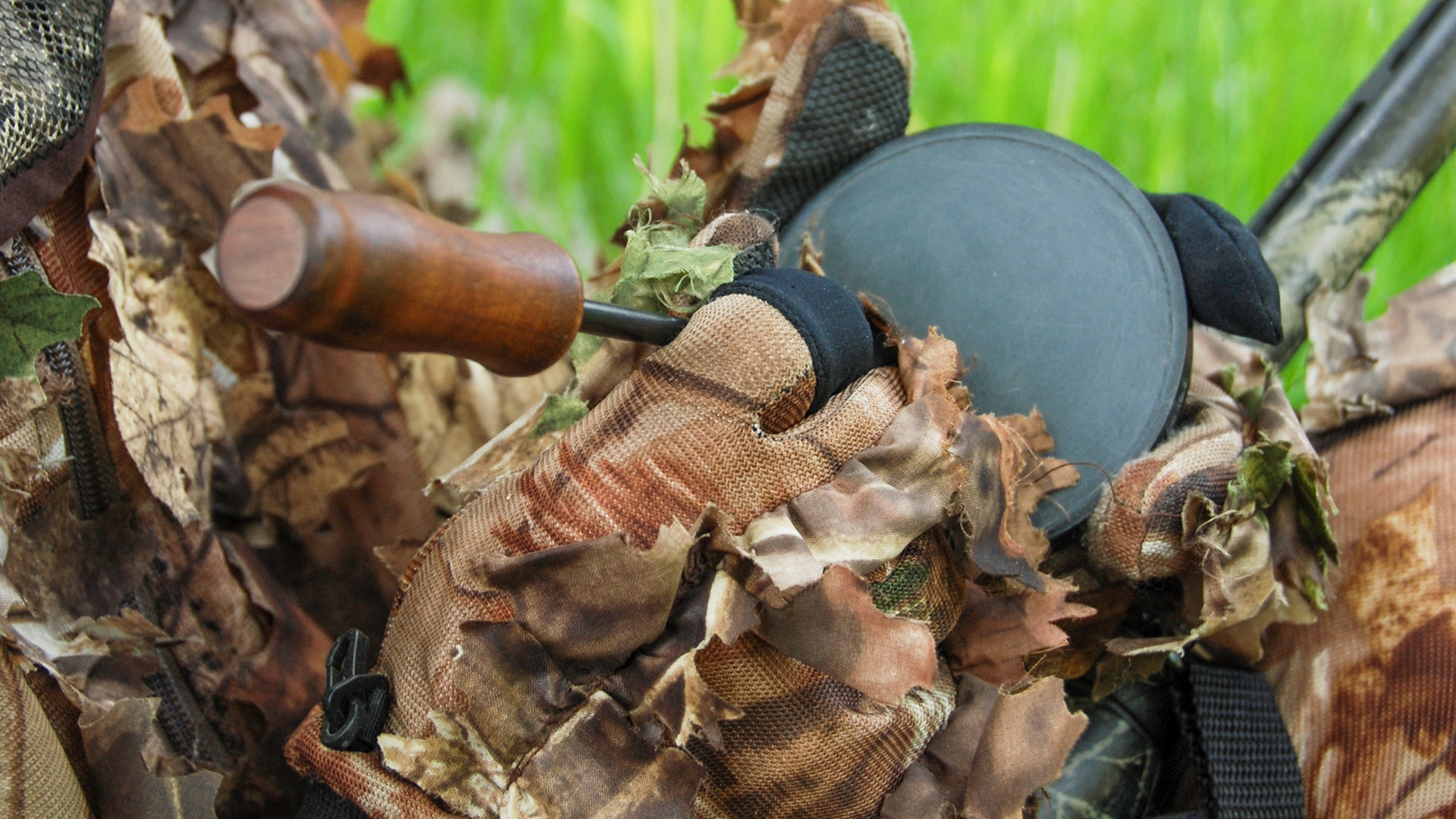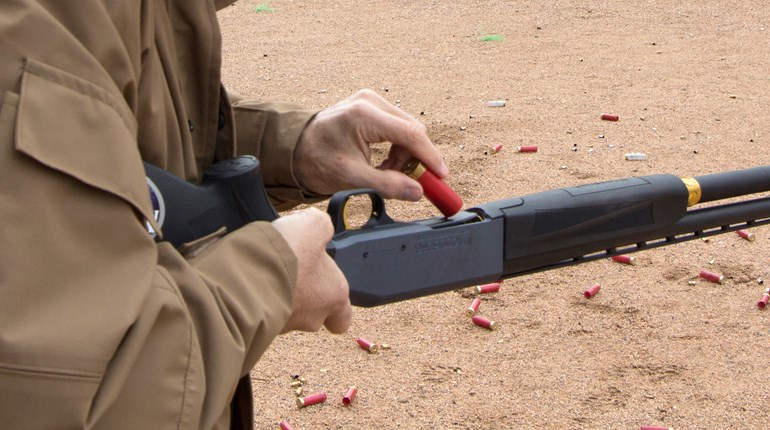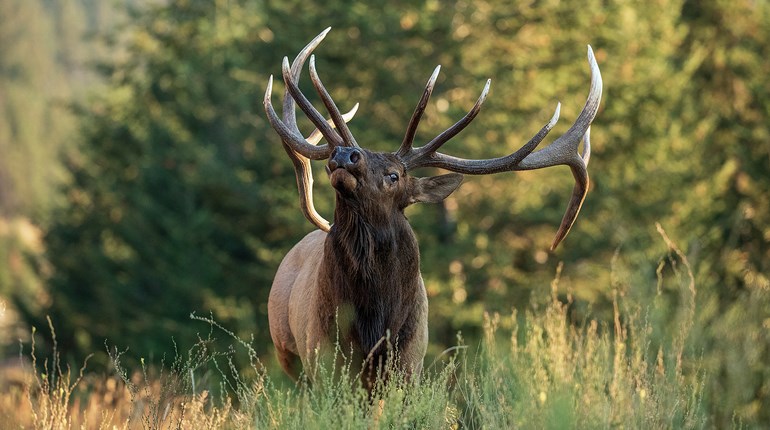
Occasionally you’ll close a truck door and a bird will gobble and come running, beard swinging, as if he couldn’t meet his own demise fast enough. But most times it’s nothing like that; most times you have to devise a plan, make the right moves and then hope your trickery is enough to fool a wary old tom. Here’s a basic three-step turkey hunting plan devised to put the odds in your favor this spring.

Step 1: Scout
We all know we need to scout, and if we had limitless time to dig around in the woods, we’d all be modern-day Kit Carsons. But the reality for most of us is this: We have to work, and we can’t afford to spend multiple days in the woods before turkey season even starts. Nonetheless, the No. 1 thing you can do to increase your odds on opening day is to scout your hunting area thoroughly so you have a feel for what the birds are doing. Your goals should be to: A) make sure there is a huntable population of turkeys on the property and then to find a tom; B) learn the terrain, property boundaries and notable features on the land such as food sources, cover, meadows, creeks and fences—anything that influences turkey movement; C) find roosting and feeding locations; D) identify the stealthiest way to get to those locations and E) find and scout an alternate area in case you need a contingency plan.
The bad news is scouting takes time and effort, and there is no substitute for boots on the ground so you can physically find fresh turkey sign and current food sources. (A map can show you a creek where turkeys might roost, but only your eyes and ears can confirm it.)
But there’s plenty of good news. First, technology has made scouting vastly easier. Apps like OnX, Spartan Forge, HuntStand and others can make the process quicker and easier because you can pre-scout at home to find places of interest then head straight to them in person, pre-armed with a general knowledge of the land. Sure, you can do this with topo maps, but satellite technology has eliminated much of the guesswork regarding things such as identifying food sources and knowing whether there is water in the creek at the moment. Once you find and mark some places of interest such as hidden meadows, crop fields or potential roosting areas, physically visit these sights and hang a trail cam or two (if private land) to see what’s up. (Pro tip: If you do not capture a longbeard on a trail camera, do not write off the property. Plenty of times game, either by luck or savvy, avoid cameras.)
Secondly, most locals aren’t as protective of turkeys as they are of big bucks. Many will tell you where they’ve seen birds—if you are polite and develop a little conversational rapport before asking about the turkeys so it doesn’t feel like an interrogation to them. Farmers and ranchers are treasure troves of intel. Get on their good side.
Third, turkeys aren’t as sensitive to disturbances as mature bucks. They get spooked by a litany of manmade and natural occurrences each day, then generally return to their comfort zones quickly provided the danger doesn’t persist. The point is, when scouting you can walk through the woods quickly without having to slip around like a ninja as you look for sign.
And the fourth reason scouting for turkeys is not all that difficult is due to the fact that they are vocal creatures. So if you can park or hike within a half-mile of a suspected roosting area at dawn or dusk, you should be able to hear a tom if one is around. And if you hear one, you’re in business. Move in ASAP to take a more detailed look at the trees or tree the turkeys are likely roosting in. If you can scout that spot one more morning by listening and observing, you’ll likely learn what direction the turkeys prefer to move after flydown. Then develop a plan of how to get into the roost area as silently as possible and how to move to the feeding areas from there.
If you prefer hunting from a ground blind and find a good spot for one, now’s the time to set that bad boy up, 75 to 100 yards from the roost, if possible. And if you do nothing else, try to scout the evening before opening day to “roost” a gobbler in person. If you know for a fact where the tom is sleeping on a given night, your odds of bagging him in the morning spike dramatically.

Step 2: Setup with Confidence (But Be Ready to Move)
If you’ve got a gobbler roosted, set up well before dawn. You need to be sitting with your back against a tree, completely silent, at least 30 minutes before legal shooting light. It should still be pitch black as you slip into position, so that even if the gobbler can hear you approaching he won’t be able to see you. Keep in mind, gobblers live in the woods and hear critters scurrying under them at night constantly. Obviously try to be as stealthy as possible, and don’t use a flashlight if you can possibly help it. Don’t make any non-woodsy sounds like loading your shotgun (load it at the truck), and put your darn phone on silent. Try to sneak within approximately 100 yards of the roost, depending on the available cover and the moonlight. Obviously, if the bird is roosted in the wide open it might be farther than that. If he’s in heavy timber or you have creeks and terrain features to use to your advantage, perhaps you can sneak within 50. Try to get on the side of the roost tree where you most suspect the birds will naturally choose to go. This might mean making a large loop to the other side of the tree before getting too close to it.
Once you get set up (i.e., shotgun and calls at the ready, camo gloves and facemask on, decoy deployed if you have one) resist the urge to call more than two or three series in total, and only with a very light and emotionless “tree call.” Your goal here is simply to tell the gobbler: “Hey, I’m over here and just waking up.” Dozens of times I’ve made the mistake of calling vigorously while the tom is in the tree, only to have him fly directly away from me when he finally decides to fly down.
While it’s tempting to mimic the tone and vigor of nearby hens, you don’t want to get into a competition with them. Most times they do not recognize the strange hen, and they’ll often do their best to take their flock—including the tom—directly away from you as soon as possible. So let the gobbler know you’re there then hope he flies down in your direction. If you’re not too confrontational with your calls, the hens will often pitch down and hang out for a while. That’s what you want.

Listen keenly for the flydown. Know the gobbler is on the ground before you start hammering him with calls. Once he’s down, gauge his temperature according to the frequency and aggressiveness of his gobbles. If he is double and triple gobbling, he’s looking for love. Now’s the time to call aggressively. Try some hard cutts. If, however, he’s playing coy, often your best bet is to play it right back. Call on your terms, not his. Meaning, don’t answer him every time he gobbles. Try to get him to start answering you.
The whole while, though, you should be listening to him to determine which way he’s moving. If he’s getting closer, stand pat. If it sounds like he’s staying in one place, it probably means he’s with a hen and doesn’t want to leave her. You might have to wait it out. But if you learn that he’s moving away from you, waste no time in moving as well. At this point you need to lean on your scouting to try to get where you believe he is going. If you have no idea where he’s going (maybe he doesn’t, either) quit calling and do a big loop to get in front of him. Once you are around him and within 100 to 150 yards of him, set up and call.
If he quits calling altogether, don’t panic or give up. He’s still in the area, he’s just gone silent for whatever reason. In this case stay put and slow-play it with your calling until you hear him again. Cut the distance each time he sounds farther away. If you never hear him again, that’s OK too. He’ll come back to his roost later that day. If your regulations allow hunting in the evenings, set up 75 yards from the roost two hours before dusk. If laws don’t allow evening hunting, be back in there the following morning with added experience and fresh hope.
Step 3: Employ a Contingency Plan
There are many instances where you must enact a contingency plan—heck, most instances in my experience! For example, perhaps you never heard a bird gobble that morning or spooked one badly to the point he flew over the neighbor’s fence. Perhaps you heard gobbling, then heard the shotgun blast of another hunter. Perhaps the bird just quit gobbling and you have no idea where he went, but it’s the last day you have to hunt and so you’ve got to launch a Hail Mary if you are to bag a bird. Whatever the case, you need to have a contingency plan if your initial plan goes up in flames.
If the property is big enough, now might be the time to hustle to another feeding area to look and listen for birds. If this doesn’t pan out, consider slipping through the woods using the natural terrain features while calling (using both hen and shock calls) in an attempt to “strike up a bird.” If you hear one gobble, try to quickly discern: 1) which direction he is from you; 2) how far is he is from you, and 3) whether you can get closer to him without spooking him.
One big mistake rookies make frequently is, after hearing a bird, they immediately drop down and set up wherever they happen to be, thinking the bird is much closer than it actually is. Rather, your first thought should be to try to cut the distance to within 100 yards. To do this, switch to a shock call like an owl, crow or woodpecker. The goal here is to make him gobble again to reveal his exact whereabouts—and not to call him in before you are ready.
Again, this is where your scouting pays off. If you know there are terrain features such as creeks or ridges that can hide your hustle, use them to get closer before setting up to call. Maybe you know there is a fence line he is using as a strutting area. If so, go to it! But don’t lollygag. Make a decision—either move closer if you can or don’t—but quickly get to calling.

If the bird does not come to your calls and you do not have another day to hunt, go for broke by trying to stalk closer, or, preferably, by circling around him to call from another angle. I’m not sure why, but often this tactic works on a hung-up bird. If you spook him, oh well. But plenty of times, after losing the fear of spooking him and being more aggressive, you’ll nail him.
If you have another place to hunt, now might be the time to head that way. Perhaps there’s a longbeard there that has a natural proclivity to amble toward your shotgun’s muzzle.
If, however, you have plenty more time to hunt, you’re in the catbird seat: You know a tom is in there, and you know where he likes to hang out. Now’s a great time to take a glorious little snooze in the woods and hope he gets active again around 10:30 as his hens move off to nest. Or it might be the time to head to Denny’s and regroup for the following morning. That’s all part of a sound contingency plan in my book.
Pop-Up Concealment
Pop-up ground blinds have revolutionized turkey hunting by making it easier. That’s because a turkey’s brain isn’t adept at realizing there could be danger within an object. Rather they often just look at the object itself for any signs of danger, which often comes in the form of movement. The advantage of a ground blind is, of course, it allows the hunter within it to get away with much more movement than he could if he were sitting in the open by a tree. The advantage to a “pop-up” blind is that it’s mobile and capable of being set up in mere minutes.

For years I have resisted sitting in dark ground blinds, mainly because they rob me of the sights and sunshine of wonderful spring mornings. But now several companies make pop-up blinds that use one-way mesh to give the hunter a full view of the world around him, all while concealing him from the keen eyes of turkeys. Two that I’ve used and recommend are Primos’ Double Bull SurroundView series and Muddy’s Infinity blinds. While I’m generally a more mobile hunter who doesn’t often use a blind, these blinds no doubt give hunters an edge, and are especially nice in bad weather or when taking less-experienced hunters afield.



































